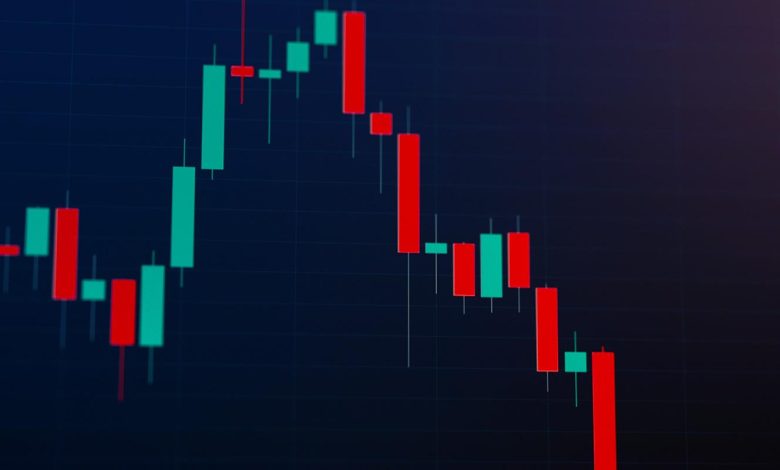The Role of Technical Analysis in Crypto Investing

- Understanding the basics of technical analysis
- How technical analysis can help predict price movements in cryptocurrencies
- Common technical indicators used in crypto investing
- The importance of chart patterns in technical analysis
- Combining fundamental and technical analysis for successful crypto investing
- The role of emotional discipline in applying technical analysis to crypto trading
Understanding the basics of technical analysis
Understanding the basics of technical analysis is crucial for successful crypto investing. Technical analysis involves studying historical price data to predict future price movements. By analyzing charts and patterns, investors can identify trends and make informed decisions about when to buy or sell cryptocurrencies.
One of the key concepts in technical analysis is support and resistance levels. Support levels are price points where a cryptocurrency tends to stop falling and bounce back up, while resistance levels are price points where it tends to stop rising and pull back down. By identifying these levels, investors can set entry and exit points for their trades.
Another important aspect of technical analysis is indicators. Indicators are mathematical calculations based on price, volume, or open interest that can help investors confirm trends or predict potential reversals. Common indicators include moving averages, relative strength index (RSI), and MACD.
Overall, technical analysis provides crypto investors with a framework for making informed decisions based on data and statistics rather than emotions or speculation. By understanding the basics of technical analysis, investors can improve their chances of success in the volatile world of cryptocurrency trading.
How technical analysis can help predict price movements in cryptocurrencies
Technical analysis is a valuable tool for predicting price movements in cryptocurrencies. By analyzing historical price data, traders can identify patterns and trends that may indicate future price movements. This analysis involves studying charts and using various indicators to make informed decisions about when to buy or sell a particular cryptocurrency.
One of the key benefits of technical analysis is its ability to help traders identify support and resistance levels. Support levels are price points where a cryptocurrency has historically had difficulty falling below, while resistance levels are price points where it has struggled to rise above. By identifying these levels, traders can make more accurate predictions about when a cryptocurrency is likely to reverse direction.
Another important aspect of technical analysis is the use of indicators such as moving averages, relative strength index (RSI), and MACD. These indicators help traders identify overbought or oversold conditions in the market, which can signal potential trend reversals. By paying attention to these signals, traders can make more informed decisions about when to enter or exit a trade.
Overall, technical analysis can be a powerful tool for predicting price movements in cryptocurrencies. By studying historical price data and using various indicators, traders can gain valuable insights into market trends and make more informed trading decisions. While technical analysis is not foolproof, it can provide traders with a valuable edge in the highly volatile world of cryptocurrency investing.
Common technical indicators used in crypto investing
When it comes to crypto investing, there are several common technical indicators that traders use to analyze price movements and make informed decisions. These indicators help investors identify trends, predict potential price changes, and determine the best times to buy or sell cryptocurrencies. Some of the most widely used technical indicators in the crypto market include:
- Relative Strength Index (RSI): This indicator measures the speed and change of price movements. It is used to determine whether a cryptocurrency is overbought or oversold, helping traders decide when to enter or exit a trade.
- Moving Averages: Moving averages smooth out price data to identify trends over a specific period. Traders often use the 50-day and 200-day moving averages to determine support and resistance levels.
- Bollinger Bands: Bollinger Bands consist of a simple moving average and two standard deviations above and below the average. They help traders identify volatility and potential price breakouts.
- MACD (Moving Average Convergence Divergence): The MACD is a trend-following momentum indicator that shows the relationship between two moving averages of a cryptocurrency’s price. Traders use it to identify changes in momentum.
- Fibonacci Retracement: Fibonacci retracement levels are horizontal lines that indicate where support and resistance are likely to occur. Traders use these levels to identify potential reversal points.
By utilizing these technical indicators in crypto investing, traders can gain valuable insights into market trends and make more informed decisions. It is essential to understand how each indicator works and how to interpret their signals accurately to maximize profits and minimize risks in the volatile world of cryptocurrencies.
The importance of chart patterns in technical analysis
Chart patterns play a crucial role in technical analysis when it comes to crypto investing. These patterns provide valuable insights into the market behavior and help investors make informed decisions. By analyzing these patterns, traders can identify potential entry and exit points, as well as predict future price movements.
There are various types of chart patterns that traders use to analyze the market, such as head and shoulders, double tops and bottoms, triangles, flags, and pennants. Each pattern has its own significance and can indicate a potential trend reversal or continuation. By recognizing these patterns, traders can gain a competitive edge in the market and improve their trading strategies.
Chart patterns are formed based on the historical price movements of an asset, reflecting the psychology of market participants. These patterns are visual representations of market sentiment and can help traders understand the underlying dynamics of the market. By studying these patterns, traders can anticipate how the market is likely to behave in the future.
Overall, chart patterns are an essential tool in technical analysis for crypto investing. They provide valuable information about market trends and help traders make more informed decisions. By incorporating chart patterns into their analysis, traders can enhance their trading strategies and increase their chances of success in the highly volatile crypto market.
Combining fundamental and technical analysis for successful crypto investing
Combining fundamental and technical analysis is crucial for successful crypto investing. While technical analysis focuses on historical price data and chart patterns, fundamental analysis looks at the underlying factors that drive the value of a cryptocurrency.
By using both approaches, investors can gain a more comprehensive understanding of the market and make more informed decisions. Fundamental analysis helps investors evaluate the long-term potential of a cryptocurrency, while technical analysis can provide insights into short-term price movements.
When combining these two methods, investors can identify opportunities that may not be apparent when using just one approach. For example, a cryptocurrency may have strong fundamentals but be experiencing a short-term price dip due to market sentiment. By using technical analysis to identify support levels, investors can buy in at a favorable price.
Ultimately, successful crypto investing requires a balanced approach that takes into account both fundamental and technical factors. By combining these two analyses, investors can make more strategic decisions and increase their chances of success in the volatile crypto market.
The role of emotional discipline in applying technical analysis to crypto trading
Emotional discipline plays a crucial role in effectively applying technical analysis to crypto trading. It is essential for investors to remain calm and rational when making trading decisions based on technical indicators. Emotions such as fear and greed can cloud judgment and lead to impulsive actions that may result in losses.
By maintaining emotional discipline, traders can stick to their trading plan and avoid making decisions based on impulse. This allows them to analyze the market objectively and make informed decisions based on technical analysis rather than emotions. Emotions can often lead to overtrading or holding onto losing positions for too long, which can be detrimental to overall profitability.
Having emotional discipline also helps traders to manage risk effectively. By setting stop-loss orders and adhering to risk management strategies, traders can protect their capital and minimize losses. This disciplined approach to trading can help investors stay focused on their long-term goals and avoid making decisions based on short-term market fluctuations.






